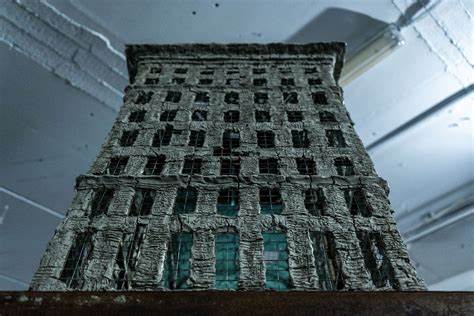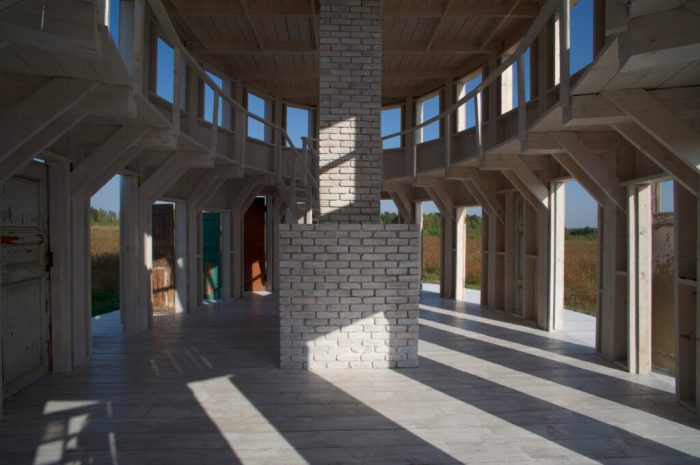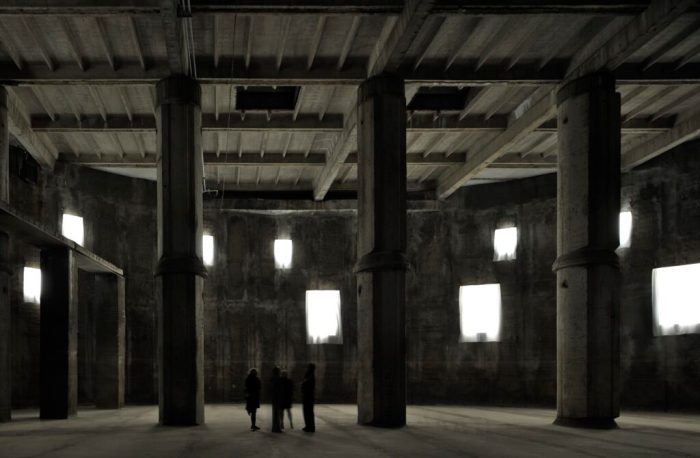Exploring the world of Alexander Brodsky: Russian Architecture That Speaks Volumes takes us on a journey through the unique and captivating architectural style of this renowned artist. From innovative designs to cultural influences, Brodsky's work is a testament to the power of architectural storytelling.
Delving deeper into his projects and themes, we uncover a world where materials, techniques, and legacy intertwine to create a lasting impact on the Russian architectural landscape.

 Alexander Brodsky's architectural designs often revolve around a few key themes that are deeply intertwined with cultural, historical, and political influences. His work goes beyond mere structures and delves into storytelling and symbolism, creating a unique and thought-provoking experience for viewers.
Alexander Brodsky's architectural designs often revolve around a few key themes that are deeply intertwined with cultural, historical, and political influences. His work goes beyond mere structures and delves into storytelling and symbolism, creating a unique and thought-provoking experience for viewers.
 As we conclude our exploration of Alexander Brodsky's work, we are left with a profound appreciation for the depth and significance of his architectural contributions. His legacy continues to inspire and shape the future of Russian architecture, speaking volumes to all who encounter his extraordinary creations.
As we conclude our exploration of Alexander Brodsky's work, we are left with a profound appreciation for the depth and significance of his architectural contributions. His legacy continues to inspire and shape the future of Russian architecture, speaking volumes to all who encounter his extraordinary creations.

Background on Alexander Brodsky
Alexander Brodsky is a renowned architect known for his unique and thought-provoking approach to design. His architectural style is characterized by a blend of traditional Russian elements with a contemporary twist, creating structures that are both visually striking and deeply rooted in history.Architectural Style
Alexander Brodsky's architectural style often features a mix of materials such as wood, metal, and concrete, creating a contrast between old and new. His designs incorporate intricate details and textures that evoke a sense of nostalgia while still feeling modern and innovative.Impact on Russian Architecture
Brodsky has had a significant impact on the Russian architectural scene, challenging conventional norms and pushing boundaries with his unconventional designs. His work has inspired a new generation of architects to think outside the box and explore the rich history of Russian architecture in a contemporary context.Key Projects
- The Rotunda - A circular structure that serves as a meeting place and cultural hub, showcasing Brodsky's ability to merge architectural traditions with modern design principles.
- The House of Books - A striking building that houses a bookstore and library, featuring Brodsky's signature blend of materials and textures to create a unique architectural experience.
- Gorky Park Entrance - An entrance gate to Gorky Park in Moscow, designed by Brodsky to be both functional and visually captivating, reflecting his commitment to creating spaces that engage and inspire.
Themes in Alexander Brodsky’s Work
 Alexander Brodsky's architectural designs often revolve around a few key themes that are deeply intertwined with cultural, historical, and political influences. His work goes beyond mere structures and delves into storytelling and symbolism, creating a unique and thought-provoking experience for viewers.
Alexander Brodsky's architectural designs often revolve around a few key themes that are deeply intertwined with cultural, historical, and political influences. His work goes beyond mere structures and delves into storytelling and symbolism, creating a unique and thought-provoking experience for viewers.
Urban Decay and Transformation
One of the prominent themes in Brodsky's work is the exploration of urban decay and transformation. He often incorporates elements of decayed or abandoned buildings, highlighting the passage of time and the evolution of urban landscapes.Nostalgia and Memory
Brodsky's designs frequently evoke a sense of nostalgia and memory, drawing on elements from the past to create a dialogue between history and the present. This theme adds layers of depth and emotion to his architectural creations.Social Critique and Commentary
Through his work, Brodsky offers social critique and commentary on various aspects of society. His designs can serve as a reflection of political or cultural issues, inviting viewers to ponder and engage with the underlying messages embedded in the architecture.Materials and Techniques
Alexander Brodsky is known for his unconventional use of materials and innovative techniques in his architectural projects. His choice of materials plays a crucial role in enhancing the narrative of his work, creating a unique and thought-provoking architectural language.Materials Commonly Used by Alexander Brodsky
- Brodsky often incorporates reclaimed or salvaged materials, such as wood, metal, and bricks, in his projects. These materials not only add a sense of history and nostalgia to his designs but also contribute to sustainable construction practices.
- Concrete is another material frequently used by Brodsky, often in unexpected ways. He manipulates concrete to create sculptural forms that challenge traditional notions of the material's rigidity and heaviness.
- Glass is also a prominent material in Brodsky's work, used to create transparency and lightness in contrast to the solidity of other materials.
Innovative Techniques and Approaches
- Brodsky is known for his experimental approach to construction techniques, often pushing the boundaries of traditional building methods. He combines handcrafted elements with digital technologies to create intricate and visually striking architectural details.
- One of Brodsky's innovative techniques is the use of negative space and voids in his designs. He strategically places openings and gaps within structures to play with light and shadow, challenging the viewer's perception of space.
- Another distinctive technique is Brodsky's use of scale manipulation, where he creates architectural elements that appear oversized or undersized, distorting the viewer's sense of proportion and scale.
Enhancing the Narrative through Materials
- By incorporating a mix of traditional and unconventional materials, Brodsky creates a rich visual and tactile experience that invites viewers to engage with the history and context of the built environment.
- His choice of materials not only reflects his interest in sustainability and resourcefulness but also adds layers of meaning to his architecture, sparking conversations about memory, identity, and cultural heritage.
- Through his innovative techniques and material choices, Brodsky's architecture speaks volumes about the past, present, and future of Russian architectural discourse, challenging conventions and inviting reinterpretation.
Influence and Legacy
Alexander Brodsky's unique architectural vision has left a lasting impact on contemporary architects and has reshaped the global perception of Russian architecture.Influence on Contemporary Architects
Many contemporary architects have been inspired by Alexander Brodsky's unconventional approach to architecture, which emphasizes storytelling, symbolism, and minimalism. His work challenges traditional architectural norms and encourages experimentation and creativity.Shaping Perception of Russian Architecture Globally
Alexander Brodsky's work has played a crucial role in changing the stereotypical perception of Russian architecture as solely monumental and grandiose. He has shown the world a different side of Russian architecture, one that is poetic, introspective, and deeply rooted in cultural narratives.Lasting Legacy of Brodsky’s Contributions
The lasting legacy of Alexander Brodsky's architectural contributions lies in his ability to blend art and architecture seamlessly. His work continues to inspire architects to think outside the box, blur the boundaries between disciplines, and create spaces that evoke emotions and tell stories. Brodsky's legacy serves as a reminder that architecture is not just about building structures, but also about creating experiences and connections with the people who inhabit these spaces.Last Recap
 As we conclude our exploration of Alexander Brodsky's work, we are left with a profound appreciation for the depth and significance of his architectural contributions. His legacy continues to inspire and shape the future of Russian architecture, speaking volumes to all who encounter his extraordinary creations.
As we conclude our exploration of Alexander Brodsky's work, we are left with a profound appreciation for the depth and significance of his architectural contributions. His legacy continues to inspire and shape the future of Russian architecture, speaking volumes to all who encounter his extraordinary creations.













